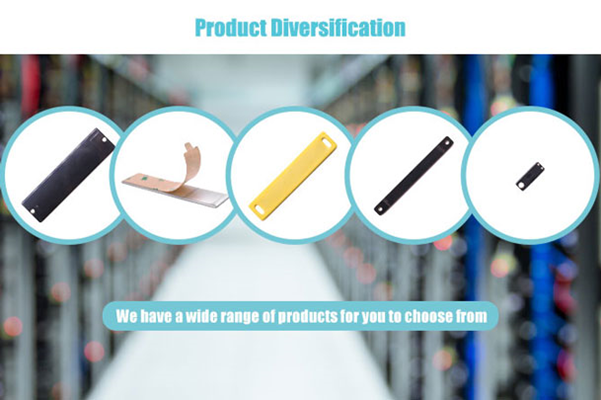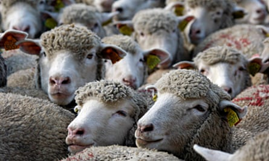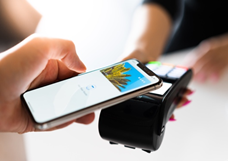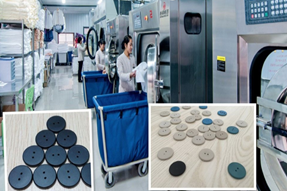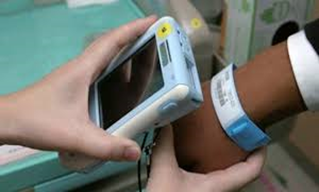RFID-tegnologie gebruik radiogolwe om voorwerpe outomaties te identifiseer, versamel data daaroor, en voer die data direk in rekenaarstelsels in met min of geen menslike ingryping nie. 'N Tipiese RFID-masjien het drie komponente: RFID-merker, RFID-leser en die antenna. RFID-kaarte bevat 'n unieke nommer en ander besonderhede wat deur die leser vasgelê word en omskep word in data wat in rekenaars gestoor word.
RFID tags come in three frequencies- Low, High and Ultra High. Businesses decide on the frequency type based on their application of tags. Before we explain the scenarios where these High frequency and Ultra high frequency tags are used, let us first understand the basics of ‘frequency’ in these industrial tags.
What is Frequency?
Frequency is the number of occurrences of a repeating event per unit of time. It is measured in units of hertz (Hz) which is equal to one cycle of a repeating event per second. Frequency is an important measurement used in science and technology to specify the rate mechanical vibrations, audio signals (sound), radio golwe, and light. A wave that completes a cycle in one second would be counted as one hertz. Dus, a tag with a frequency of 14.56 MHz radiates a wave that cycles 14,560,000 times per second.
What is Low, High and Ultra High Frequency (As jy nuut is met RFID of selfs as jy hierdie tegnologie gebruik)
RFID systems use many frequencies but most commonly use high- (13.56 MHz) and ultra-high frequency, or UHF (902-928 MHz). The RFID tag and the reader have to have the same frequencies to function properly. A low frequency is used for scanning objects in proximity, whereas a UHF can scan a wider range of objects and transfer data faster than others.
Low Frequency Tags: Low Frequency tags operate between the range of 30KHz to 300KHZ. These tags are passive and do not require additional batteries to operate. These tags work best on metals and objects with high water content like liquids, fruits and livestock because they have longer wavelength to penetrate through these substances. LF RFID tags are used for asset tracking, laundry management, livestock tracking, and healthcare management.
High Frequency Tags: As compared to Low or Ultra-high frequency tags, High-frequency tags have shorter reading distance and weaker anti-interference, so they are not suitable for reading animal tags. But they have good encryption, and they readable and writable. They also have a better storage capacity than the LF tags. High Frequency tags operate at 13.56 MHz and has many applications. These tags can be used for objects ranging from millimeters to meters, various storing capacities, and on objects exposed to water. Businesses can choose from many tag sizes and memory combinations to suit their application. Another category of High Frequency is ‘Near Field Communication’(NFC), that allows communication with the tags using a smartphone.
HF and NFC tags are relatively cheaper and their price varies with respect to their size. They are usually designed as labels, cards, or plastic encased tags.
High Frequency Tags are used in scenarios like passports ticketing, payment, biblioteek, hospitals and other data transfer applications.
NFC in particular is popularly used in marketing and advertising, in access control and data transfer applications.
Ultra-High Frequency Tags: UHFs generally measure longer distances from meters to feet in between 860 en 960 MHz. UHF tags are used for objects that require quick scanning from a distance. This tagging system has become popular for its speed, accuracy and quick data transfer. UHF tags are much cheaper, and are primarily used in retail inventory tracking, pharmaceutical anti-counterfeiting, livestock management and other scenarios where large volumes are tagged.
There are two types of UHF Tags:
Passive UHF RFID: These tags do not have additional power supply in the form of batteries. They function on the power transmitted by the reader. Vandaar, these tags function within the range of 30 meter. As these tags are sensitive to liquid and metal, they are widely used in laundry management. Apart from that Passive RFID is used in tool tracking, race timing, IT asset tracking and many other applications.
Active UHF RFID: These tags use batteries for their power supply. They have longer scan rage as compared to passive readers. These tags can be scanned from 100 meters ver. Active tags are expensive as compared to passive tags because of additional batteries. Active RFID tags are widely used in transportation and logistics, vehicles, oil and gas industry, construction, gesondheidssorg, life science and many more.
RFIDHY provides a number of RFID solutions for customers across animal, gesondheidssorg, klere, laundry, biblioteek, Batebestuur, logistics industries and many more.
We offer variety of cards in the Low Frequency, Hoë frekwensie, and Ultra High Frequency categories with many customization options.
Met oor 20 years of experience in providing industrial RFID solutions, we help you design unique customized tags according to your applications and help you reduce the cost. Daarbenewens, the RFID tag series of RFIDHY offers maximum application flexibility using a variety of components including data carriers, metal and plastic processor housings.
